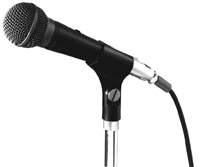Libraries at University of Nebraska-Lincoln

University of Nebraska-Lincoln Libraries: Presentations
ORCID IDs
Date of this Version
2-21-2005
Document Type
Article
Abstract
I have seen the future arrive several different times and in a number of different settings. It arrives in the form of new technologies. Initial progress is slow, and accompanied by a certain amount of frustration. But new conveniences emerge, and they eventually change the most basic levels and details of how things get done. Continuity is key. You have to have a good strong sense of what you are trying to get done. If you don’t, the technology threatens to take over. You cannot direct it towards your own purposes and goals if it is not always clear to you what those are.
The future is bright, it is open, it is loaded with new opportunities. What are we using the new technology to do? Hopefully, it is to fulfill an accepted and traditional purpose — the dissemination and preservation of knowledge or scholarship, for research and for teaching, and providing access to information for the UNL community and the world beyond. The emerging tools for information management are far more powerful than those of the past. We need to approach them with an understanding of the objects we are working for and to recognize the continuity of traditional measures of quality and success.


Comments
Talk delivered to Library Faculty, University of Nebraska-Lincoln, February 21, 2005.